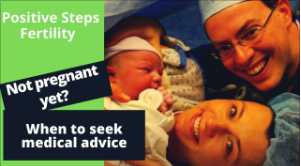With six million babies in the world from in vitro fertilization (IVF), technology has advanced meaningfully since the birth of Louise Brown, the first IVF baby, over two decades ago. IVF remains an exceptionally powerful way of getting pregnant, provided there are reasonable eggs, sperm, and a hospitable uterus.
Even when those aren’t present, though harder, IVF still can often work, though sometimes in particularly difficult circumstances sperm or egg donors or a gestational carrier (“surrogate”) is needed. Additional advances such as preimplantation genetic testing can identify healthy embryos, lowering the risk of birth defects and miscarriages.
Subfertility: Delay in Conceiving
Yet at the same time, many women have treatable reasons for subfertility that require low tech, low-cost solutions that may save a lot of money for decorating the future baby room or for the child’s college fund. The challenge is balancing time, money, energy, success, and safety, all of which relate to personal goals and deserve an individualized plan.
If You Want to Get Pregnant
If you want to get pregnant and have more time to go about the process, oral medication and insemination can often go a long way. Much of fertility can be reduced to increasing DNA for a couple (sperm and eggs), helping them find each other in the tubes, and having a healthy place for the embryo to implant in the uterus. Oral medication typically increases the eggs from one to two or three (or four, particularly when in the late 30’s/early 40’s), though if a woman doesn’t ovulate regularly sometimes going from no eggs in a month to one is enough.
Similarly, insemination is often the equivalent of twenty to fifty times of having relations, so far more sperm have a chance of finding an egg. This particularly helps for men with lower sperm counts. Excessive weight overheating the testes, working outdoors in a Southern summer or other hot conditions, and testosterone use are the top reasons we see for male factor subfertility.
Building Blocks of Getting Pregnant
If the right building blocks are present, 30-50% of many women will conceive within three months of this low cost, low tech approach, often with a total cost of $1500 for ultrasounds, inseminations, and medications. Though not free, this is comparable to the daily cost of Starbucks for a year for many and is often quite doable when insurance rarely covers fertility treatment.
However, one also has to know one’s personal odds going into the process. Oral medication and insemination are less effective when couples have been trying for a long time (e.g. eight years or more) or when the tubal disease is present. Many women with the tubal disease are otherwise healthy, but if the tubes are blocked or badly damaged, one can have the best sperm or eggs possible, but if they can’t find each other, getting pregnant can be much more difficult.
Increasing Your Odds of Getting Pregnant Means Understanding Your Body
Ultimately, finding what is right for you (even if adoption or child free-living) is best, but you have to know where your body stands relative to blind hope. If a couple has stopped contraception for 18 months and has not gotten pregnant, the typical odds are 10:1 against spontaneous conception over the next several years. For this reason, evaluation is critical, but so is knowing there is a lot of hope, and there are affordable options for getting people where they want to be. For many, the biggest obstacle to becoming parents is their own fear. However, a discussion with us is very easy and can help guide you on the right path. Hopefully, that path leads to the family of your dreams!
If you are wanting to build your family, we would love to help you. From simple explanations to high tech solutions, or a simply a fresh perspective if what you’ve been doing on your own or with a doctor hasn’t worked, come see us in our Monroe, Shreveport, Madison, Starkville, or Hattiesburg MS offices.
Call us at 855-759-4124 and let’s help you have the child of your dreams!
J. Preston “Pres” Parry, MD, MPH




